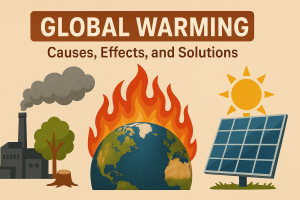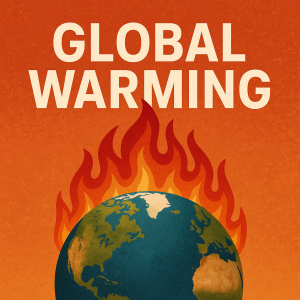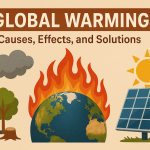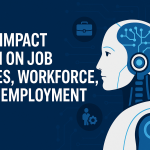In recent decades, global warming has emerged as one of the most critical environmental challenges facing humanity. Defined as the long-term heating of Earth’s climate system due to human activities, particularly the burning of fossil fuels, global warming has widespread implications for ecosystems, weather patterns, and future generations. In this blog post, we explore the causes, effects, and actionable solutions to this pressing issue, using verified data and expert consensus.
🌡️ What Is Global Warming?

Global warming refers to the gradual increase in Earth’s average surface temperature due to excessive emissions of greenhouse gases (GHGs) such as carbon dioxide (CO₂), methane (CH₄), and nitrous oxide (N₂O). These gases trap heat in the Earth’s atmosphere, leading to the “greenhouse effect.”
According to NASA, the Earth’s average surface temperature has risen by about 1.1°C (2.0°F) since the late 19th century, with most of the warming occurring in the last 40 years[^1].
🔥 Primary Causes of Global Warming
1. Burning Fossil Fuels
Coal, oil, and natural gas are burned for electricity, heat, and transportation, releasing massive amounts of CO₂—a key contributor to the greenhouse effect.
2. Deforestation
Forests act as carbon sinks. When trees are cut down, not only is this carbon-absorbing ability reduced, but the stored CO₂ is also released into the atmosphere.
3. Industrial Activity
Factories emit a variety of pollutants, including GHGs. The industrial sector is responsible for over 30% of global emissions as of 2023[^2].
4. Agriculture and Livestock
Agriculture produces methane through livestock digestion and nitrous oxide from fertilizer use. These gases are far more potent than CO₂ in terms of heat retention.
5. Waste and Landfills
Decomposing organic waste in landfills releases methane, contributing to the greenhouse gas effect.
🌪️ Devastating Effects of Global Warming
1. Extreme Weather Events
Global warming leads to more frequent and intense natural disasters, including hurricanes, floods, heatwaves, and droughts.
-
Example: In 2023, extreme heatwaves in Europe caused over 61,000 excess deaths, according to The Lancet[^3].
2. Melting Ice and Rising Sea Levels
The Arctic is warming nearly four times faster than the rest of the planet[^4]. As glaciers melt, sea levels rise, threatening coastal cities and low-lying nations.
-
Projection: Sea levels could rise 1 to 2 meters by 2100 if emissions continue unchecked[^5].
3. Disruption of Ecosystems
Warming alters natural habitats, leading to species extinction. Coral reefs, for example, are experiencing bleaching events due to rising sea temperatures.
4. Food and Water Insecurity
Changes in rainfall patterns and droughts affect crop yields, reducing food availability. In many regions, freshwater supplies are dwindling due to both climate change and overuse.
5. Human Health Risks
Increased air pollution, heat exposure, and disease spread (e.g., malaria, dengue) are already being observed due to rising global temperatures.
📉 The Socio-Economic Impact
Global warming is not only an environmental issue but a major socio-economic threat.
-
Developing countries are disproportionately affected, despite contributing the least to global emissions.
-
Insurance costs, food prices, and infrastructure damage from climate disasters are raising economic inequality globally.
-
Climate migration is expected to displace up to 1.2 billion people by 2050, according to the Institute for Economics & Peace[^6].
✅ Solutions and What We Can Do
1. Transition to Renewable Energy
Solar, wind, hydro, and geothermal energy are clean alternatives to fossil fuels. Governments and industries must invest in renewable infrastructure.
-
By 2030, renewables could supply up to 65% of global electricity, according to the International Renewable Energy Agency (IRENA)[^7].
2. Energy Efficiency
Using energy-efficient appliances, insulating buildings, and reducing energy waste can significantly cut emissions.
3. Afforestation and Reforestation
Planting trees helps absorb atmospheric CO₂. Protecting existing forests is equally important.
4. Sustainable Agriculture
Techniques like crop rotation, organic farming, and reduced fertilizer use can minimize the sector’s carbon footprint.
5. Carbon Pricing and Policies
Governments can enforce carbon taxes, emissions trading systems, and climate legislation to regulate pollution.
6. Support Innovation
Invest in green technology, such as carbon capture, electric vehicles, and sustainable materials.
7. Public Awareness and Lifestyle Changes
Individual actions, like reducing meat consumption, using public transport, recycling, and conserving energy, do make a difference when adopted at scale.
🌐 Global Agreements and Efforts

The most significant international response to global warming is the Paris Agreement, signed in 2015. The goal is to limit global warming to well below 2°C, ideally 1.5°C above pre-industrial levels[^8].
Many countries have updated their Nationally Determined Contributions (NDCs) to reduce emissions and adapt to climate change. However, the UN Emissions Gap Report 2023 states that current efforts are not sufficient, and global warming could reach 2.8°C by 2100 unless drastic actions are taken[^9].
📢 Final Thoughts
Global warming is no longer a distant threat; it is a present-day crisis. Its impacts are being felt across the globe, affecting people, wildlife, and economies. The solution lies in a unified global response—a shift in policies, innovations, and daily habits.
If each of us takes small but meaningful actions and holds our leaders accountable, we can still mitigate the worst effects and build a sustainable future for coming generations.
“We do not inherit the Earth from our ancestors; we borrow it from our children.” – Native American Proverb
More Articles : How AI Is Transforming Job Roles, Workforce Dynamics, and the Future of Employment









